Robots
Follies of the Madmen #614
Posted By: Paul - Fri Jan 17, 2025 -
Comments (0)
Category: Food, Robots, Television, Advertising, Australia
Dancing with Robots
Catie Cuan has carved out a niche for herself as a pioneer of choreorobotics (dancing with robots). Through her dancing she hopes to help "dispel fears of a robot takeover."More info: CatieCuan.com, sfchronicle.com
Posted By: Alex - Thu Jan 02, 2025 -
Comments (1)
Category: Robots, Dance
The Timberjack Walking Machine
Also known as the John Deere Walking Tractor. It was like a real-life version of the walkers from Star Wars (minus laser cannons). Details from Forestry Thoughts:There were few reasons why there were only two ever made. One was high price and other main one was its slowness in the field. It is a remarkable piece of engineering ahead of its time. One of these machines is at display at the Lusto, at the Finnish Forest Museum. And the other one I think, was shipped to USA to be displayed at some John Deere exhibition.
Posted By: Alex - Sun Nov 03, 2024 -
Comments (0)
Category: Robots, Technology
The Birth of the Robot
The creator's Wikipedia page.
Posted By: Paul - Sat Oct 26, 2024 -
Comments (1)
Category: Robots, Stop-motion Animation, 1930s, Cars
Mr. Analyst, the mechanical golfer
In 1966, Golfcraft of Escondido, California debuted a robot golfer whose job was to test new golf clubs and balls. They held a contest to name him, and after receiving over 1500 entries decided to call him "Mr. Analyst."
More details from the Long Beach Press-Telegram (Aug 21 1966):
The robot is the answer to all those who have ever left a course in disgust, muttering something about that not being a fit game for man or beast.
Mr. Analyst is the product of the tinkering of William J. Glasson, a golfer who also has concluded, from time to time, that it was a game fit not for man or beast.
Glasson started toying with his mechanical monster while trying to figure out scientifically how to lower his five handicap on the links. At the time he had graduated from Massachusetts Institute of Technology and was working on the Falcon missile.
"The monster was still a crude thing then," Glasson reminisces, "mounted on a wooden tripod. And I had to crank it manually to get it to work. At first it would only hit the ball about 125 yards. But, after making several modifications and adjustments it started belting it 200 yards and I got excited about its possibilities."
At a recent demonstration, the robot showed graphically how it has been improved by socking balls one after another in low, screaming trajectories to a distance of 400 yards on the fly. Even that isn't the most amazing aspect of its skills. Its accuracy at this distance is what is truly amazing. All the balls landed within a circle only 15 feet in diameter.

image source: Offbeat Golf (1998) by Bob Loeffelbein
Glasson was granted patent no. 3,373,612 for his invention. His patent drawings show a non-humanized version of his machine.

Posted By: Alex - Mon May 27, 2024 -
Comments (2)
Category: Robots, Patents, Golf, 1960s
Deranged Robot
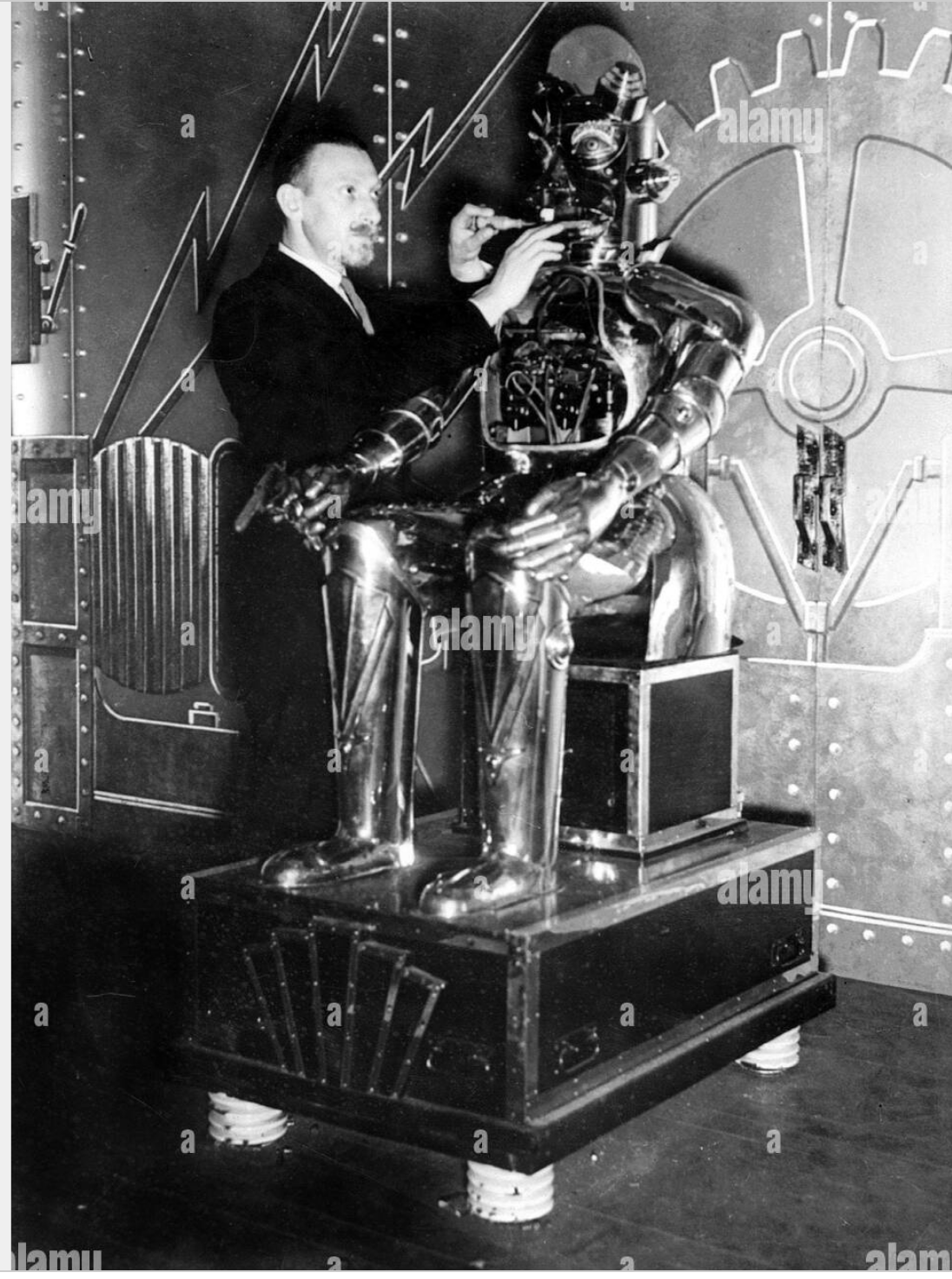
A 'mentally disturbed' robot at the World Fair in San Diego, 1935/36. A robot provides entertainment at the California Pacific Exposition in San Diego, [but] instead of giving the planned speech, it suddenly began to speak in a boisterous cabaret voice and afterwards emitted the sounds of an orchestra. After a little bewilderment the cause for this 'mental confusion' was discovered: due to a circuit error, the robot had transmitted the program of the exhibition's broadcast station. The photo shows the robot during a thorough inspection of its speech organs and its circuits.
Posted By: Paul - Fri Feb 02, 2024 -
Comments (0)
Category: Robots, Expositions, World Fairs, Celebrations, 1930s, Mental Health and Insanity
Follies of the Madmen #551
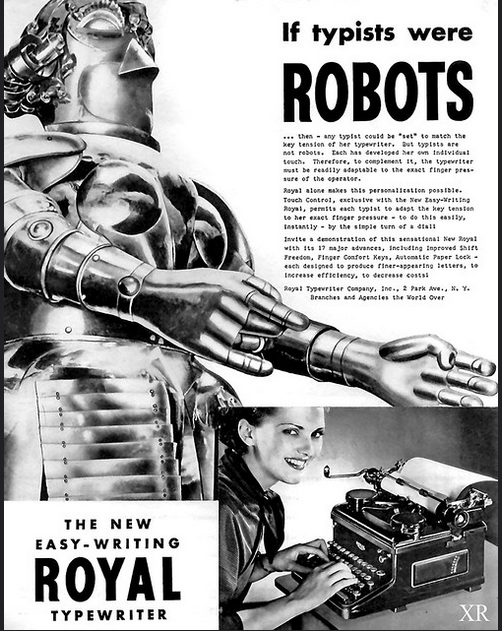
Posted By: Paul - Thu Dec 29, 2022 -
Comments (4)
Category: Business, Advertising, Robots, Women, Twentieth Century
WABOT-2, the Organ-Playing Robot
WABOT-2 was created in the early 1980s, but I can't find any info on what's become of him since then. Whoever now owns him should be renting him out to play at weddings and funerals — recoup some of that $1.2 million it cost to build him.More info: Waseda University
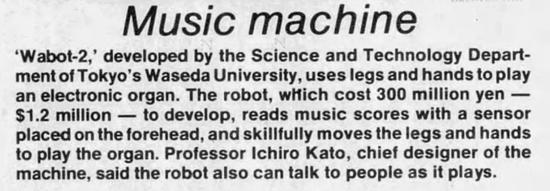
Belleville News-Democrat - Sep 13, 1984

Posted By: Alex - Sat Oct 08, 2022 -
Comments (2)
Category: Music, Robots, AI, Robots and Other Automatons, 1980s
Follies of the Madmen #524
Posted By: Paul - Thu Jan 27, 2022 -
Comments (0)
Category: Robots, Technology, Advertising, Cats, Asia, Pregnancy
Seleno, the Electric Dog
Read the amazing story of cyber-pup here!ADDENDUM: the link is down as of mid-day May 20, but since the site is a longstanding page, I assume the outage is temporary and am leaving the link in place.
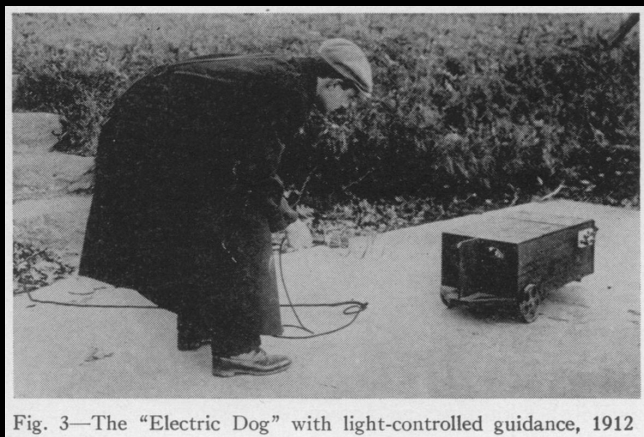
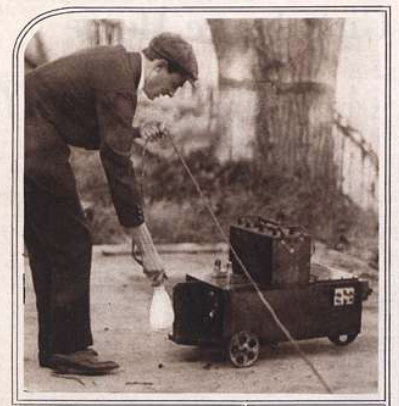
Posted By: Paul - Thu May 20, 2021 -
Comments (1)
Category: Inventions, Robots, 1910s

| Who We Are |
|---|
| Alex Boese Alex is the creator and curator of the Museum of Hoaxes. He's also the author of various weird, non-fiction, science-themed books such as Elephants on Acid and Psychedelic Apes. Paul Di Filippo Paul has been paid to put weird ideas into fictional form for over thirty years, in his career as a noted science fiction writer. He has recently begun blogging on many curious topics with three fellow writers at The Inferior 4+1. Contact Us |




